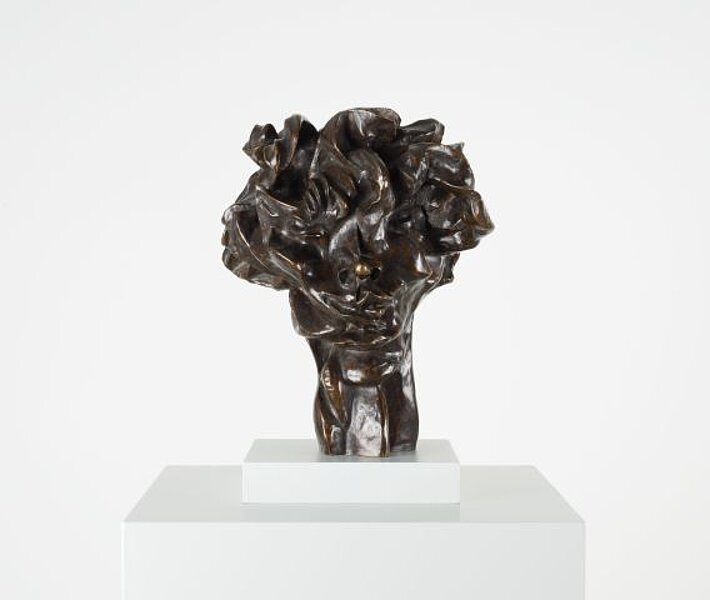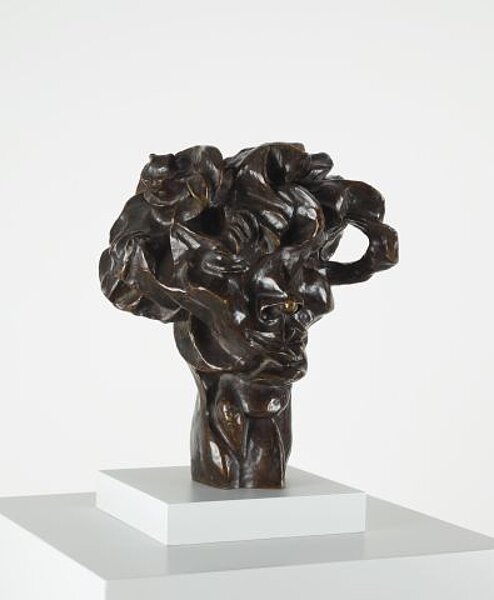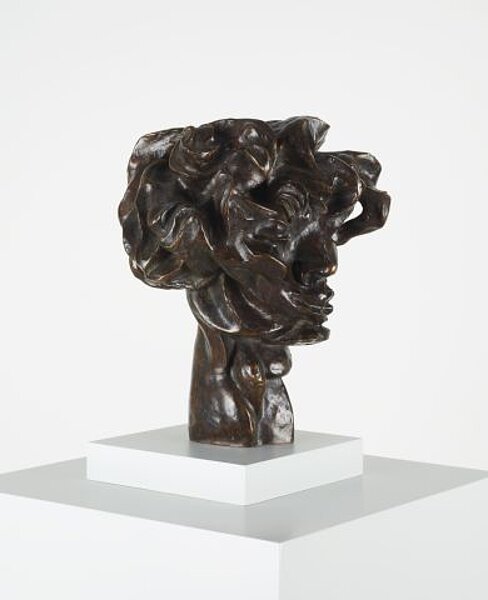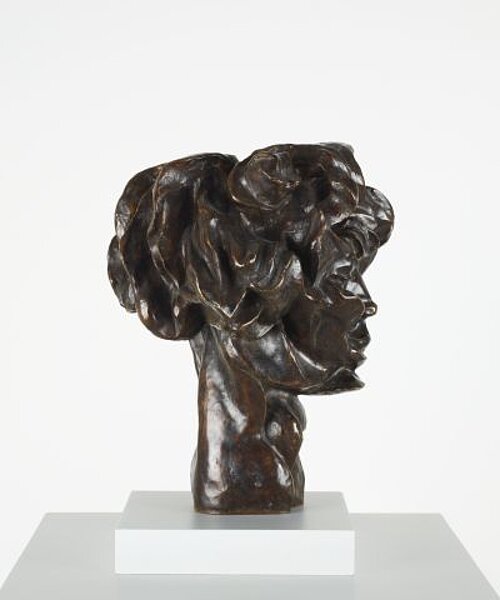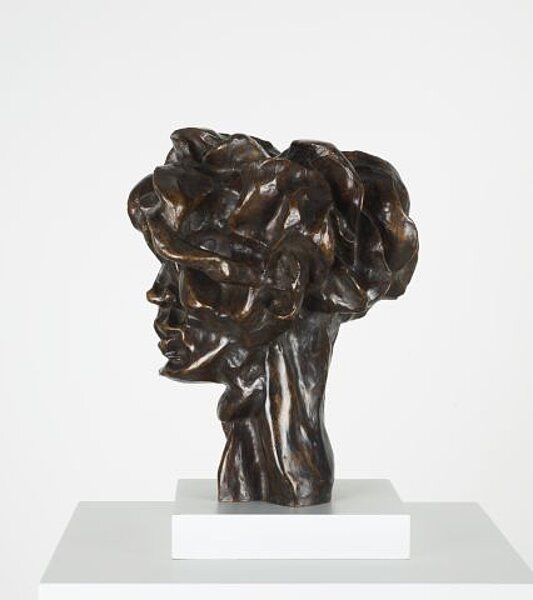
Gutfreund, Oto
Viki
1912 - 1913
| Object description | Bronze casting |
|---|---|
| Object category | plastic |
| Material |
object:
bronze
|
| Technique |
object:
bronze casting
|
| Dimensions |
object:
weight: 10 kg
object size:
height: 35 cm,
width: 27 cm,
depth: 24 cm
|
| Year of acquisition | 1967 |
| Inventory number | P 66/0 |
| Creditline | mumok - Museum moderner Kunst Stiftung Ludwig Wien |
| Rights reference | Gemeinfrei | public domain |
| Further information about the person | Gutfreund, Oto [GND] |
| Literature |
Porträts. Aus der Sammlung Laboratorium Moderne/Bildende Kunst, Fotografie und Film im Aufbruch |
“The most original of these Czech artists is unquestionably Otto Gutfreund: he stands out as the most important Cubist sculptor after Picasso.” stated Pierre Daix, writer and one of Picasso’s friends. Sculptor Otto Gutfreund, who spent most of his professional and creative life in Prague, is one of the few Jewish artists in the German-speaking Expressionist art movement. In 1909 he went to Paris to study, met Picasso and came in contact with modernity’s avantgarde. These are the influences on his early sculptures: Cubist formal structures which in his case, however, become increasingly dynamic in form. The body is less visible from all sides simultaneously – as in Picasso’s work – and instead almost ecstatically dynamised. After he returned to Prague in 1911, Parisian Cubism began to change towards a synthetic cubism, becoming quieter and more planar. Colour returned to painting. Gutfreund’s Prague works are very different. Today the portrait head, “Viki” from 1912-13, is among his best known works. The bronze bust is an example of a visionary conception of sculpture characterised by the dissolution of stasis in favour of the interaction of dynamic parts. As with many of his fellow artists in Czechoslovakia at the time, Gutfreund was seeking a synthesis of the rational and formal vocabulary of Cubism with expressive elements reminiscent of the theatricality of Baroque art. It is at exactly this time that he writes in his diary: “The apparent similarity of Baroque sculpture with that of the present day is based on a wealth and mobility together with a vigorous form. In Baroque times this mobility came from an imbalance of power, from conflict. Today we struggle to achieve the free unfolding of an action with no trace of a conflict.”
© mumok – museum moderner kunst stiftung ludwig wien

